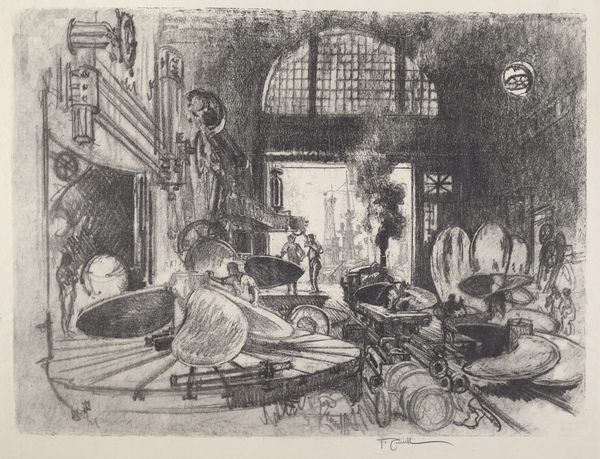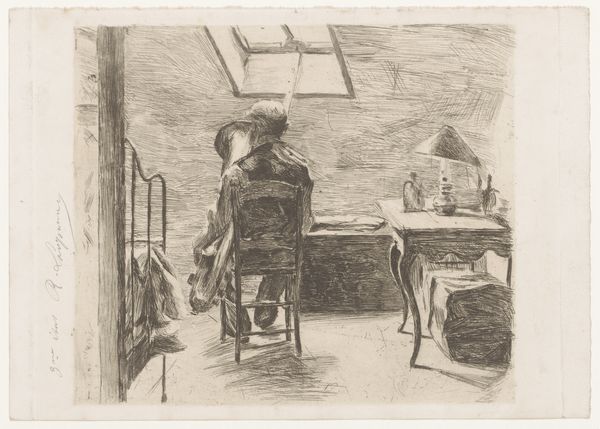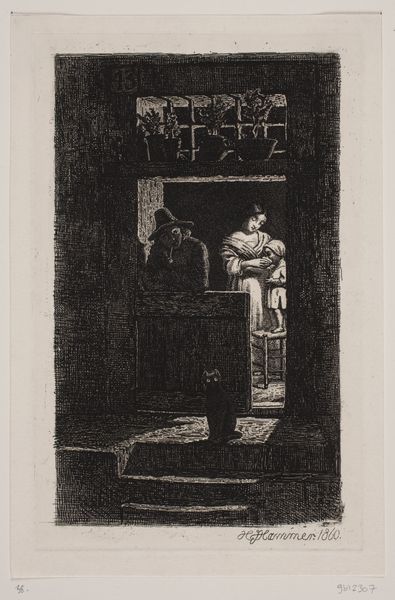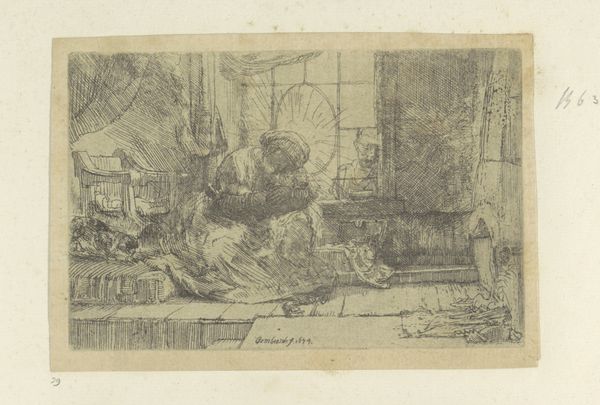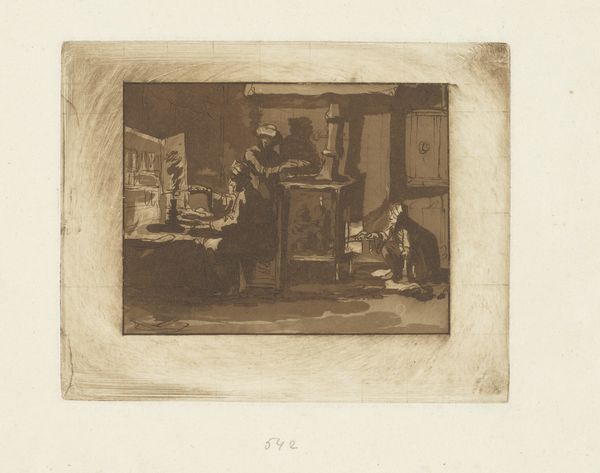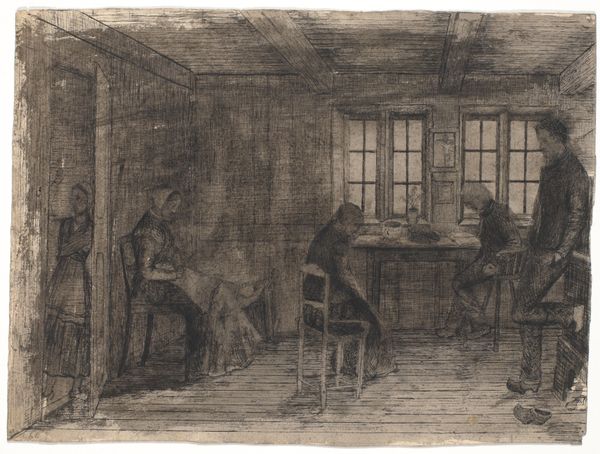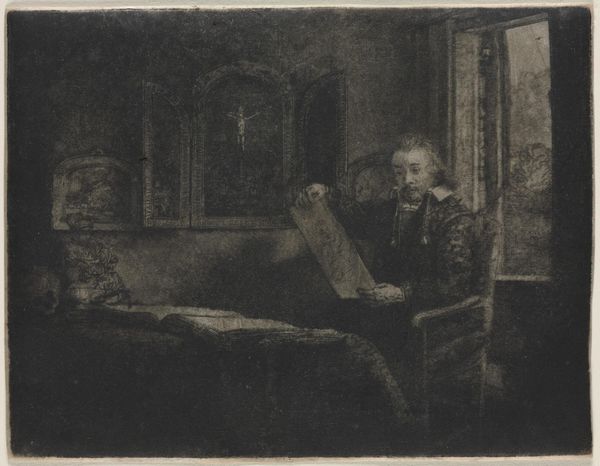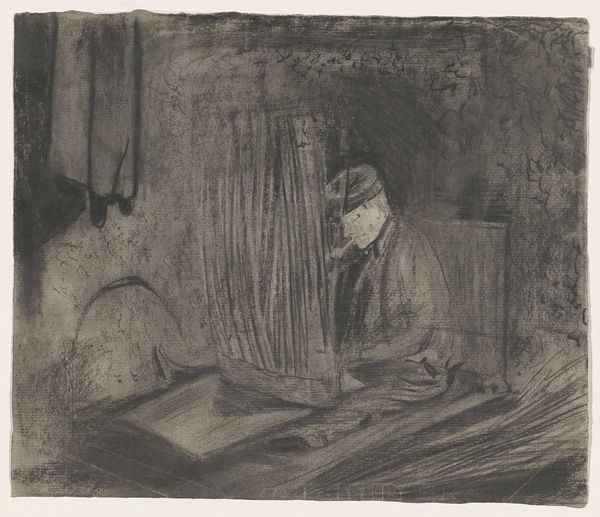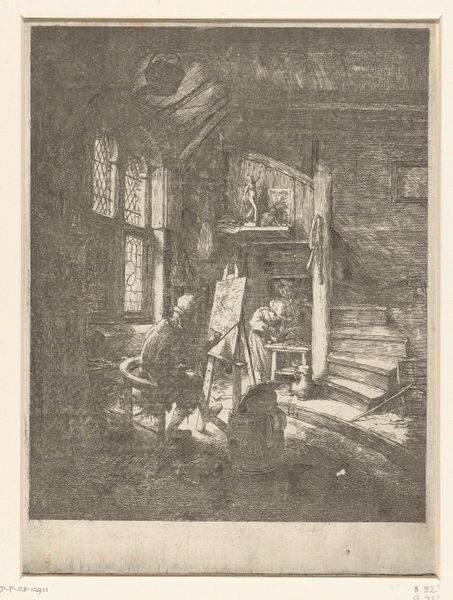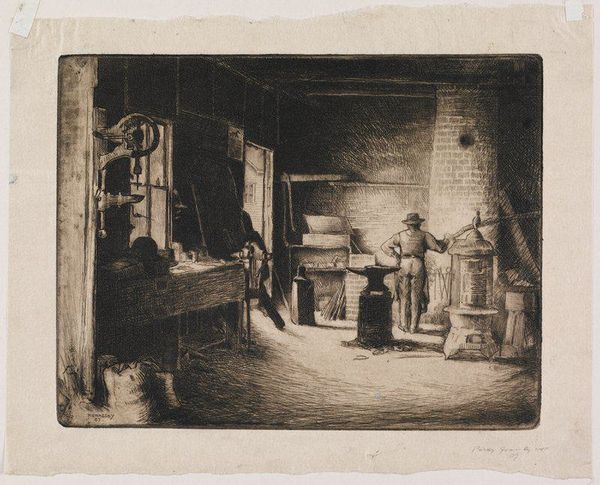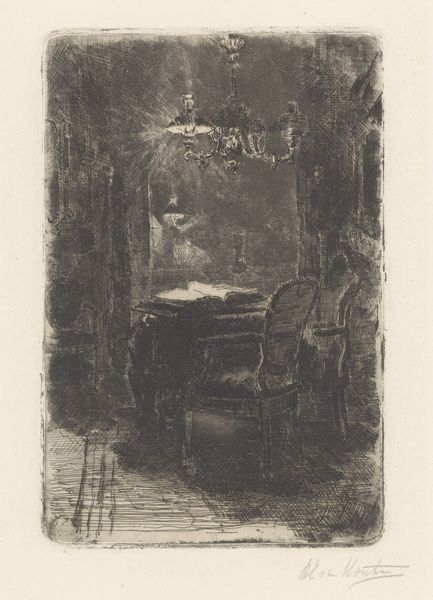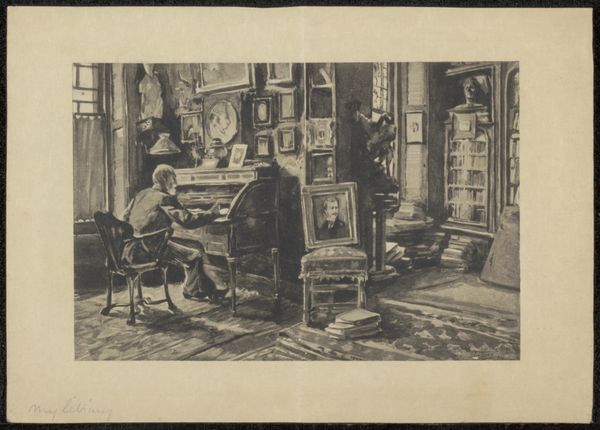
Dimensions: plate: 11.8 x 18.2 cm (4 5/8 x 7 3/16 in.) sheet: 18.7 x 26.4 cm (7 3/8 x 10 3/8 in.)
Copyright: National Gallery of Art: CC0 1.0
Curator: Let’s explore Daniel Nikolaus Chodowiecki's etching from 1774, titled "The Artist in His Mother's Room, Danzig." Editor: The immediate sense I get is one of constrained domesticity, punctuated by a stark contrast between the bright, almost blinding window light and the oppressive dark ink of the etching. There is a story of someone stuck between those dualities, trapped in this interior space. Curator: It is fascinating how Chodowiecki utilizes the etching technique to articulate space and character. Observe how the hatching and cross-hatching define volume and texture, particularly on the surfaces and the clothing. It gives a sense of solidity to an otherwise ephemeral moment. Editor: But whose solidity are we really seeing? I find myself reflecting on how the gaze operates within a familial power structure. The scene is imbued with gendered notions of domestic confinement, placing his mother as the static anchor. We might wonder: is the artist observing with love, or is he attempting to wrestle with the implications of being bound by familiar obligation, by seeing the toll that life might take on any individual. Curator: Yes, this intimate interior serves as a visual manifestation of internal space, too, perhaps. See how the formal elements of the chair echo, structurally, elements within the window; a very strong formal decision, and likely a commentary on the psychological impact the maternal relationship might have on the artist. Editor: Indeed. Also, this work prompts essential questions regarding class, race, and access to artistic labor at the time. Who has the privilege to create, and under what material and social conditions does art become possible? His opportunity relies heavily on the quiet work of someone like his mother, making such "domestic scenes" available to men who benefit. Curator: And how does this print function within Chodowiecki's larger body of work? As an etching, it allowed for greater distribution. In terms of accessibility and the democratizing power of prints during that era, it is an extraordinary statement for any individual, regardless of familial circumstance. Editor: So true. By considering his wider historical and socio-economic circumstances, we see both the constraints and opportunities inherent in Chodowiecki's artmaking. Thank you for shedding light on a few ways to examine its importance! Curator: And thank you for opening up avenues of inquiry around social issues. What a nuanced dialogue this work inspires.
Comments
No comments
Be the first to comment and join the conversation on the ultimate creative platform.
